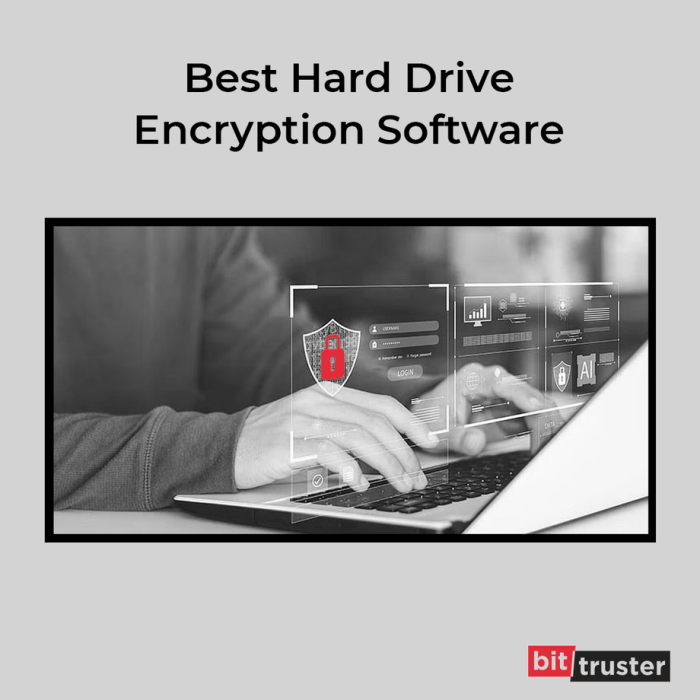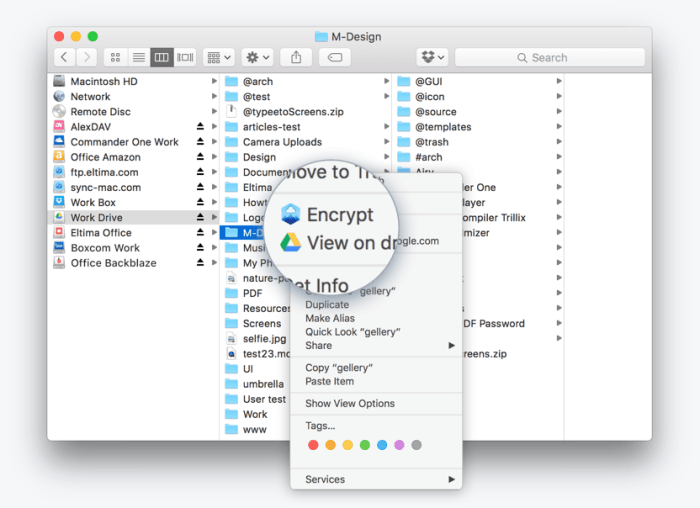Whole drive encryption software – In today’s digital landscape, data security is paramount. Protecting sensitive information from unauthorized access is no longer a luxury, but a necessity. Whole drive encryption (WDE) software provides a robust solution by encrypting the entire hard drive or storage device, ensuring that all data remains inaccessible without the correct decryption key. This comprehensive guide will delve into the intricacies of WDE software, exploring its features, benefits, different types, considerations for choosing the right software, and addressing frequently asked questions.
Understanding Whole Drive Encryption (WDE)
Whole drive encryption, also known as full disk encryption (FDE), is a security mechanism that safeguards all data stored on a hard drive, solid-state drive (SSD), or other storage media by encrypting it. This means that even if the device is physically stolen or lost, the data remains inaccessible to anyone without the correct decryption key or password. This is in contrast to file-level encryption, which only protects individual files, leaving the rest of the drive vulnerable.

Source: justpaste.it
How WDE Works, Whole drive encryption software
WDE operates by using cryptographic algorithms to transform readable data into an unreadable format (ciphertext). This encryption process happens transparently in the background, usually at the operating system level. When the system boots up, the user is prompted for the decryption key or password, allowing access to the encrypted data. If the correct credentials are not provided, the data remains inaccessible.
Types of Whole Drive Encryption
Several types of WDE exist, each with its own strengths and weaknesses:
- Hardware-based Encryption: This method uses dedicated hardware components, such as a Trusted Platform Module (TPM) chip, to perform the encryption and decryption processes. This offers superior performance and security as the encryption operations are handled directly by the hardware, making it more resistant to attacks.
- Software-based Encryption: This approach uses software installed on the operating system to manage the encryption and decryption. While generally more affordable than hardware-based solutions, it can be more susceptible to software vulnerabilities and malware attacks.
- BitLocker (Windows): Microsoft’s built-in WDE solution for Windows operating systems. It offers robust encryption and integration with other Windows security features. Requires a compatible TPM chip for maximum security.
- FileVault (macOS): Apple’s built-in WDE solution for macOS. Similar to BitLocker, it provides a secure and integrated way to encrypt the entire drive.
- VeraCrypt: A free, open-source, and cross-platform disk encryption software that offers strong encryption algorithms and a variety of features. It’s a popular choice for users seeking a robust and customizable solution.
Benefits of Using Whole Drive Encryption Software
Implementing WDE offers numerous advantages:
- Data Protection Against Theft or Loss: The primary benefit is the protection of sensitive data from unauthorized access in case of theft or loss of the device.
- Compliance with Regulations: Many industries, such as healthcare and finance, have strict regulations regarding data security. WDE helps organizations meet these compliance requirements.
- Enhanced Data Security: WDE provides a strong defense against various cyber threats, including malware, ransomware, and data breaches.
- Peace of Mind: Knowing that your data is protected by robust encryption provides peace of mind and reduces the risk of data loss.
Choosing the Right Whole Drive Encryption Software
Selecting the appropriate WDE software depends on several factors:
- Operating System Compatibility: Ensure the software is compatible with your operating system (Windows, macOS, Linux).
- Encryption Algorithm: Choose software that utilizes strong and widely accepted encryption algorithms like AES-256.
- Ease of Use: Consider the user interface and the overall ease of use. Some software is more user-friendly than others.
- Performance Impact: WDE can slightly impact system performance. Choose software that minimizes this impact.
- Cost: WDE software ranges from free open-source options to commercial solutions with varying pricing models.
- Hardware Requirements: Some software requires specific hardware components, such as a TPM chip.
Security Considerations and Best Practices
While WDE provides strong security, it’s crucial to follow best practices to maximize its effectiveness:
- Strong Passwords: Use long, complex, and unique passwords for your encrypted drive. Avoid easily guessable passwords.
- Regular Software Updates: Keep your WDE software updated to patch any security vulnerabilities.
- Secure Boot: Enable secure boot features on your system to prevent unauthorized access before the operating system loads.
- Data Backup: While WDE protects data on the drive, regular backups are still recommended to protect against other types of data loss.
- Two-Factor Authentication (2FA): If available, consider using 2FA for an extra layer of security.
Frequently Asked Questions (FAQ)
- Q: Is whole drive encryption slow? A: While WDE can slightly impact performance, modern systems and algorithms minimize this effect. The performance impact is often negligible for most users.
- Q: Can I encrypt an external hard drive? A: Yes, most WDE software allows you to encrypt external hard drives and other removable storage devices.
- Q: What happens if I forget my encryption password? A: If you forget your password, you will likely lose access to your data. There’s usually no way to recover the data without the password.
- Q: Is whole drive encryption necessary for everyone? A: The need for WDE depends on the sensitivity of the data stored on your device. If you handle highly sensitive information, it’s highly recommended. For average users, it’s a good security measure but might not be strictly necessary.
- Q: What is the difference between BitLocker and VeraCrypt? A: BitLocker is a built-in Windows solution, integrated with the operating system. VeraCrypt is a free, open-source, cross-platform option offering more customization and flexibility but requiring more technical expertise.
Conclusion
Whole drive encryption is a critical component of a comprehensive data security strategy. By encrypting the entire drive, you significantly reduce the risk of data breaches and unauthorized access. Choosing the right WDE software and following best practices will ensure the protection of your valuable data. Consider your specific needs and security requirements when selecting a solution.
Call to Action
Protect your valuable data today! Explore the various whole drive encryption options available and choose the one that best fits your needs. Don’t wait until it’s too late – secure your digital assets now.
FAQ Summary
What are the different types of whole drive encryption?
Common types include BitLocker (Windows), FileVault (macOS), and third-party solutions like VeraCrypt. They differ in features, implementation, and compatibility.

Source: cisdem.com
How does whole drive encryption affect system performance?
Encryption can slightly reduce performance, but modern hardware and software minimize this impact. The degree of impact varies depending on the encryption method and hardware capabilities.
What happens if I lose my encryption key?
Losing your encryption key means irreversible data loss. It’s crucial to securely store and back up your key.
Is whole drive encryption suitable for all devices?
Most modern computers and some mobile devices support whole drive encryption. Compatibility depends on the operating system and hardware.
Can whole drive encryption protect against all threats?
While it significantly reduces the risk of data theft, whole drive encryption isn’t a foolproof solution. It’s important to combine it with other security measures like strong passwords and regular software updates.
